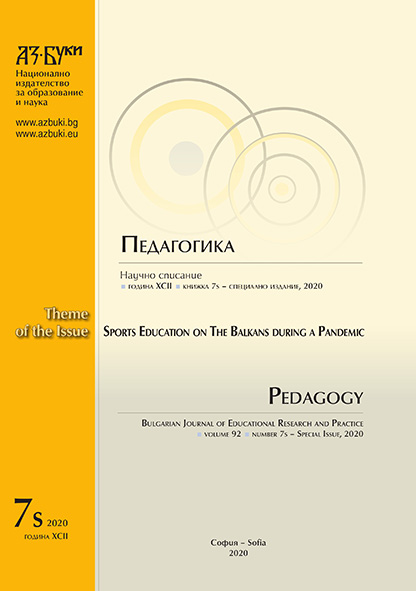Physical (in)Activity during a Pandemic Lockdown
Physical (in)Activity during a Pandemic Lockdown
Author(s): Plamen AtanasovSubject(s): Social Sciences, Education, Vocational Education, Adult Education, Higher Education , State/Government and Education, Inclusive Education / Inclusion
Published by: Национално издателство за образование и наука „Аз-буки“
Keywords: physical (in)activity; COVID-19; lockdown; body weight
Summary/Abstract: The aim of the study (survey) is to trace how the physical activity of Bulgarians has changed during the state of emergency. The survey was conducted online between 10 and 20 June 2020. It contained 26 questions related to physical activity and nutrition habits. The questions were divided into 5 parts: 1. The attitude to nutrition and physical activity in general - 4 questions; 2. Level of physical activity before the state of emergency (based on an unpublished questionnaire of B. Palatova) – 11 questions; 3. Physical activity and nutrition during the state of emergency – 9 questions; 4. Motivation, physical activity and nutrition after the end of quarantine – 3 questions; 5. Demographic data. In this study we used 1 question from the first part, of the questionnaire for physical activity and 3 questions from the third part, which examines the type, purity and satisfaction with physical activity during the state of emergency. 329 men (39.9%) and women (60.5%) were surveyed, with a BMI of 15.22 to 42.73, 74.5% from Sofia, and 45.9% with a master's degree. Only 5% of participants did not appreciate the importance of physical activity. The highest percentage of 33.4% (110 people) tried to increase their physical activity in general. From those 110 people, 85 continued to train actively during the state of emergency. 43% (141 people) of all respondents trained at home, of whom 8.5% used a training plan from an online application, 31.2% followed an instructor online, and 60.3% compiled their own training program. From that we can conclude that the online instructors and applications are still not so popular among respondents. The most satisfied with their training load are people who used an online instructor – 73%, which in our opinion is a potential niche for the market of online instructors
Journal: Педагогика
- Issue Year: 92/2020
- Issue No: 7s
- Page Range: 125-133
- Page Count: 9
- Language: English
- Content File-PDF

